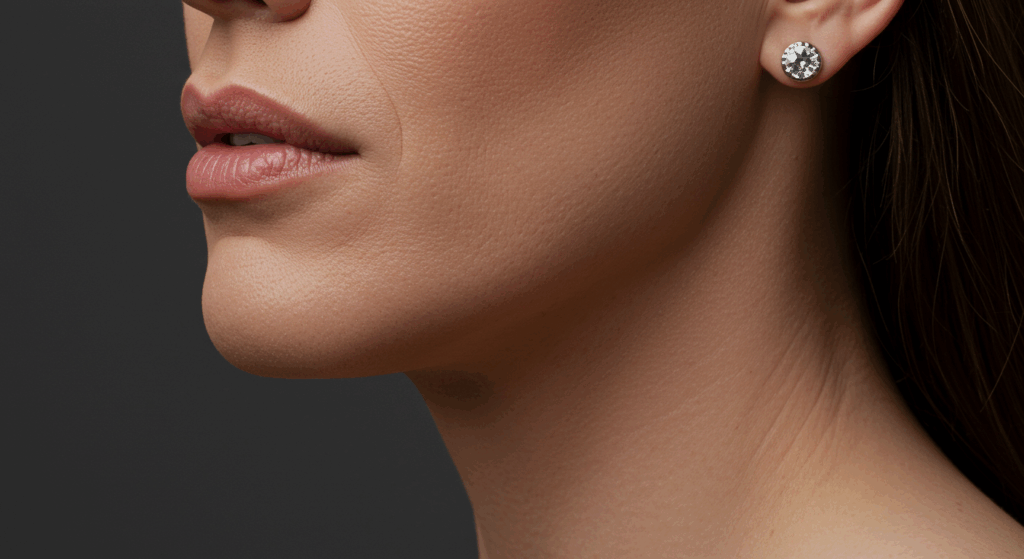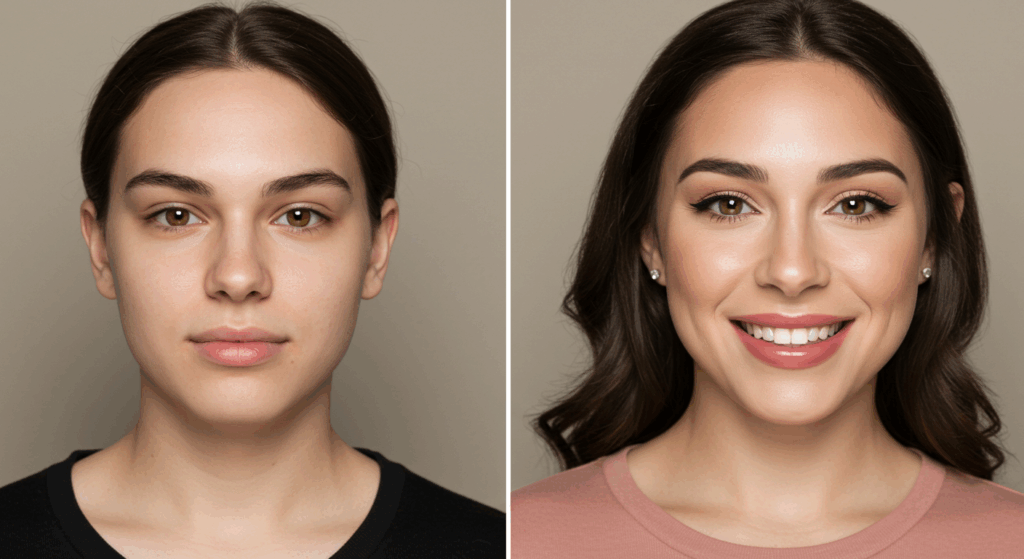Table of Contents
The Pursuit of Invisibility: Redefining Facial Feminization Surgery in Glasgow
As a surgeon dedicated to facial feminization, I often encounter a paramount concern among my transgender patients: the desire for an outcome so natural, so truly harmonious, that it appears as if no intervention ever occurred. This aspiration to achieve a “scar-free FFS” – or, more accurately, an outcome where surgical stigmata are virtually imperceptible – drives much of the innovation in our field. In Glasgow, we are at the forefront of exploring and implementing advanced techniques designed to minimize and often entirely conceal the marks of our work.
This journey towards aesthetic invisibility is a complex one, involving meticulous planning, sophisticated surgical approaches, and a deep understanding of tissue healing. For individuals seeking FFS in Glasgow, understanding these advanced techniques is crucial in managing expectations and appreciating the artistry involved.

The Foundation of Scar Management: Principles of Atraumatic Surgery
The concept of “scar-free” is, in strict medical terms, a misnomer. Any incision, by definition, disrupts tissue continuity and triggers a healing cascade that ultimately results in scar formation. However, the quality and visibility of that scar are profoundly influenced by numerous factors, many of which are under the surgeon’s control. Our aim in FFS in Glasgow is to achieve scars that are either inherently camouflaged within natural facial creases and hair-bearing areas or are so fine and mature that they become virtually invisible to the casual observer.
At the heart of this pursuit lies the principle of atraumatic surgery. This encompasses a range of practices aimed at minimizing tissue trauma during the operation. It begins with precise incision planning, often utilizing natural skin folds, hairline margins, and oral mucosa to hide potential scars. During the procedure, gentle tissue handling, meticulous hemostasis (controlling bleeding to prevent hematoma formation, which can impair healing), and the use of fine, non-reactive suture materials are paramount.
For instance, in a frontal cranioplasty (reshaping the forehead bone), a bicoronal incision (an incision made over the top of the head from ear to ear) is often employed. While this is a substantial incision, it is entirely hidden within the hair, making the resulting scar practically undetectable once the hair regrows. This exemplifies how strategic incision placement can lead to a “scar-free” appearance despite significant surgery.

Advanced Incision Placement and Endoscopic Approaches
The quest for scar invisibility has led to significant advancements in incision placement and the increasing adoption of endoscopic techniques.
Strategic Incision Planning: Hiding in Plain Sight
A key strategy in FFS is to place incisions where they can be naturally camouflaged.
- Hairline Incisions: For procedures involving the forehead, such as frontal bossing reduction (reducing the prominence of the brow bone) or hairline advancement (moving the hairline forward), incisions are meticulously placed within the hairline or just at its anterior border. When performed expertly, the healing scar along the hairline can be indistinguishable from the natural hair growth pattern. In some cases, we employ a “trichophytic incision” (an incision that bevels through hair follicles) to allow hair to grow through the scar, further enhancing its camouflage. This is a crucial technique for achieving a natural-looking forehead and hairline after FFS in Glasgow.
- Intraoral Incisions: Many procedures, particularly those involving the jaw and chin, can be accessed via incisions made inside the mouth. This is a common approach for genioplasty (chin reshaping) and mandibular angle reduction (reducing the width of the jaw angle). By placing these incisions within the oral mucosa, they are entirely hidden from external view, leaving no visible external scars. The technical challenge here lies in working within a confined space and managing potential risks such as infection, which are diligently addressed through stringent sterile protocols and prophylactic antibiotics.
- Transconjunctival Incisions: For lower eyelid procedures, such as blepharoplasty (eyelid surgery) to reduce puffiness or reshape the eyes, incisions can be made inside the lower eyelid (transconjunctival approach). This technique avoids any external skin incision, resulting in no visible scar. This is often preferred when primarily addressing fat pads rather than excess skin.
- Submental Incisions: For specific procedures like Adam’s apple reduction (tracheal shave), a small, well-placed incision in the submental crease (the natural fold beneath the chin) can be almost imperceptible. This natural crease allows for excellent camouflage of the scar once healed.
Endoscopic-Assisted FFS: Minimally Invasive Pathways
Endoscopic surgery has revolutionized many surgical fields, and its application in FFS is steadily growing, particularly for forehead contouring and brow lifts.
- How Endoscopy Works: Endoscopic techniques involve making several small, inconspicuous incisions (typically 1-2 cm in length) within the hair-bearing scalp. A tiny camera (endoscope) and specialized instruments are then inserted through these incisions, allowing the surgeon to visualize the operative field on a monitor.
- Advantages in FFS: The primary advantage of endoscopic FFS in Glasgow is the significant reduction in incision size and, consequently, scar visibility. For forehead reshaping, instead of a long bicoronal incision, multiple small scalp incisions can be used to achieve similar results, leaving virtually no visible scars. This approach is particularly beneficial for patients who wish to avoid a long scalp incision or who have concerns about hair density and potential issues with hair regrowth along a larger scar.
- Limitations: While promising, endoscopic FFS is not universally applicable to all aspects of facial feminization. Procedures requiring extensive bone work or significant soft tissue removal may still necessitate traditional open approaches. The choice between endoscopic and open techniques is carefully evaluated based on the individual patient’s anatomy, surgical goals, and the complexity of the desired changes.
Advanced Suturing Techniques and Wound Closure
Beyond incision placement, the meticulous closure of surgical wounds plays a critical role in minimizing scar visibility. This is an art as much as it is a science.
- Multi-Layered Closure: Surgical wounds are typically closed in multiple layers, starting with deep tissue layers and progressing superficially. This multi-layered approach reapproximates the tissues anatomically, reducing tension on the superficial skin layer and promoting stronger, more organized healing. For example, when closing a deep incision on the jaw, we would first bring together the deeper muscle and fascia layers, then the subcutaneous fat, and finally the skin.
- Tension-Free Closure: Tension is the enemy of good scar healing. When skin edges are brought together under tension, the resulting scar tends to be wider, raised, and more noticeable. Surgeons utilize various techniques to achieve tension-free closure, including undermining (separating the skin from underlying tissues to allow for more mobility) and strategic placement of sutures.
- Fine Suture Materials: The choice of suture material is also crucial. We employ the finest possible non-reactive sutures, often monofilament (single strand) sutures, which cause less tissue drag and reaction compared to braided sutures. These tiny sutures minimize inflammation and promote a smoother healing process.
- Intradermal (Subcuticular) Sutures: For the skin layer, particularly in areas where external sutures are undesirable, we often use intradermal or subcuticular sutures. These sutures are placed just beneath the skin surface, running parallel to the incision. This technique avoids the need for external stitches, which can leave “train track” marks, and results in a very fine, clean scar line. These sutures often dissolve naturally or are removed after a period.
Optimizing Healing: Beyond the Operating Room
The surgeon’s work extends beyond the operating theatre. Post-operative care and scar management protocols are equally vital in achieving optimal scar outcomes for FFS in Glasgow patients.
Early Post-Operative Care
- Swelling and Bruising Management: Minimizing post-operative swelling and bruising is crucial, as prolonged inflammation can negatively impact scar quality. This involves gentle tissue handling during surgery, careful hemostasis, and post-operative measures such as cold compresses, head elevation, and sometimes compression garments.
- Wound Care: Meticulous wound care, including keeping incisions clean and moisturized, prevents infection and promotes healthy tissue regeneration. Patients are given detailed instructions on how to care for their incisions to ensure optimal healing.
Long-Term Scar Management Strategies
Even with the most meticulous surgical technique, scars will form. Our focus then shifts to optimizing their maturation and minimizing their long-term visibility.
- Silicone Therapy: Silicone in various forms (sheets, gels, or creams) is widely considered the gold standard for scar management. It works by hydrating the scar, regulating collagen synthesis, and reducing itching and discomfort. Regular application of silicone products for several months post-surgery can significantly improve scar appearance, making them flatter, softer, and less discolored. We often recommend starting silicone therapy once the incisions have fully closed and any crusting has resolved.
- Massage: Gentle massage of the maturing scar can help break down disorganized collagen fibers, making the scar softer, flatter, and more pliable. This is typically commenced a few weeks after surgery, once the initial healing is complete.
- Sun Protection: New scars are particularly vulnerable to hyperpigmentation (darkening) when exposed to UV radiation. Strict sun protection, including the use of high-SPF sunscreens and protective clothing, is essential for at least 6-12 months post-surgery. This helps prevent the scar from becoming noticeably darker than the surrounding skin.
- Topical Treatments: Certain topical creams containing ingredients like vitamin E, onion extract, or corticosteroids are sometimes used, though their efficacy can vary. Our recommendations are based on evidence-based practices and individual patient needs.
Advanced Scar Revision Techniques (If Necessary)
While our goal is to achieve near-invisible scars from the outset, in some cases, a scar may mature in a less than ideal fashion. Should a scar become hypertrophic (raised and red) or keloidal (an overgrown, often itchy, and painful scar extending beyond the original wound boundaries), or simply become wider than desired, various revision techniques can be employed.
- Corticosteroid Injections: Intralesional injections of corticosteroids can help flatten and soften raised scars by reducing inflammation and collagen production. This is often a first-line treatment for hypertrophic and keloid scars.
- Laser Therapy: Various lasers, such as pulsed dye lasers, can target the redness in scars by reducing blood vessels, while fractional lasers can improve texture and stimulate collagen remodeling. Laser therapy can significantly improve the appearance of both fresh and mature scars.
- Surgical Revision: In select cases, surgical scar revision may be considered. This involves excising the existing scar and meticulously re-closing the wound using all the principles of atraumatic surgery and tension-free closure. This can be particularly effective for wide scars or those that are cosmetically unappealing due to their shape or location. However, surgical revision should only be considered after the scar has fully matured, typically 12-18 months after the initial surgery.
The Role of Patient Factors and Expectations
It is imperative to acknowledge that individual patient factors significantly influence scar healing. Genetics, skin type (e.g., individuals with darker skin tones are more prone to hyperpigmentation and keloid formation), age, nutritional status, and smoking habits all play a role. Open and honest discussions about these factors are a cornerstone of our pre-operative consultations for FFS in Glasgow.
Managing expectations is also critical. While we strive for the most imperceptible scars possible, absolute “scar-free” outcomes are a desirable goal rather than an absolute guarantee. Patients are educated that while the visible effects of surgery will be transformative, the marks of that transformation, though minimal and strategically hidden, will always be there upon very close inspection. The success of FFS in Glasgow is measured not just by the technical perfection of the surgery but by the patient’s satisfaction with their overall aesthetic outcome and the subtle, natural appearance we achieve.
The Future of Scar Management in FFS
Research into scarless healing continues to evolve at a rapid pace. Innovations in molecular biology, tissue engineering, and regenerative medicine hold immense promise for the future. We are exploring novel topical agents, injectable therapies, and even gene-editing technologies that could potentially modulate the scarring process at a fundamental level. While these are still largely in the realm of research, the ongoing pursuit of truly scarless healing underscores our commitment to providing the most advanced and aesthetically refined outcomes for our patients undergoing FFS in Glasgow.
Conclusion: Art, Science, and the Pursuit of Natural Beauty
The aspiration for “scar-free FFS” embodies the intricate balance between surgical precision and artistic vision. As a surgeon, my commitment to patients undergoing FFS in Glasgow extends beyond simply reshaping facial features; it encompasses a profound dedication to meticulous technique, innovative approaches, and comprehensive post-operative care that collectively aim to render the surgical journey invisible to the casual observer.
By strategically placing incisions, utilizing endoscopic technologies, employing advanced suturing methods, and implementing robust scar management protocols, we empower our patients to achieve a feminized facial aesthetic that is not only transformative but also remarkably natural and free from the stigmata of surgery. The journey to a truly harmonious and authentic self is one we embark on together, with the ultimate goal of unveiling the person you are, subtly, beautifully, and without a trace.
Visit Dr.MFO Instagram profile to see real patient transformations! Get a glimpse of the incredible results achieved through facial feminization surgery and other procedures. The profile showcases before-and-after photos that highlight Dr. MFO’s expertise and artistic vision in creating natural-looking, beautiful outcomes.
Ready to take the next step in your journey? Schedule a free consultation with Dr. MFO ( Best Facial Feminization Surgeon for You) today. During the consultation, you can discuss your goals, ask any questions you may have, and learn more about how Dr. MFO can help you achieve your desired look. Don’t hesitate to take advantage of this free opportunity to explore your options and see if Dr. MFO is the right fit for you.
FAQ
Sure, here are some H3 questions and paragraph answers based on the content provided:
Is “Scar-Free FFS” truly possible, or is it a misnomer?
In strict medical terms, any incision made during surgery will inevitably result in some form of scar tissue. Therefore, “scar-free FFS” is technically a misnomer. However, the goal of advanced facial feminization surgery (FFS) in Glasgow is to achieve outcomes where surgical stigmata are virtually imperceptible. This means meticulously planning incision placement within natural creases or hair-bearing areas, employing advanced surgical techniques to minimize tissue trauma, and implementing comprehensive post-operative scar management protocols. The aim is to create scars that are either entirely hidden or so fine and mature that they become virtually invisible to the casual observer, achieving a “scar-free appearance.”
How do surgeons hide incisions in FFS?
Surgeons utilize several strategic techniques to hide incisions in FFS. For forehead procedures, incisions are often placed within the hairline or just at its anterior border, sometimes using a “trichophytic incision” to allow hair to grow through the scar. For jaw and chin reshaping, intraoral incisions (inside the mouth) are common, leaving no external visible scars. Lower eyelid procedures may use transconjunctival incisions inside the eyelid. Finally, for an Adam’s apple reduction, a small, well-placed incision in the natural submental crease beneath the chin can be almost imperceptible once healed. These methods ensure that while an incision is made, the resulting scar is cleverly camouflaged.
What are the benefits of using endoscopic techniques in FFS?
Endoscopic techniques offer significant advantages in FFS, particularly for forehead contouring and brow lifts. By making several small, inconspicuous incisions within the hair-bearing scalp, an endoscope (tiny camera) and specialized instruments can be inserted to visualize and perform the surgery. The primary benefit is a substantial reduction in incision size compared to traditional open approaches, leading to minimal and often virtually invisible scars. This is particularly appealing for patients who prefer to avoid a long scalp incision or have concerns about hair density.
Why is tension-free wound closure so important for scar quality?
Tension-free wound closure is paramount for achieving excellent scar quality because tension is a major determinant of scar appearance. When skin edges are brought together under tension, the healing scar tends to be wider, raised, and more noticeable. By meticulously closing surgical wounds in multiple layers and using techniques like undermining (separating skin from underlying tissues to allow more mobility), surgeons can reduce the strain on the superficial skin layer. This promotes a stronger, more organized healing process and results in a finer, flatter, and less conspicuous scar line.
What post-operative steps are crucial for optimizing scar healing?
Beyond the surgery itself, diligent post-operative care and long-term scar management are crucial for optimal scar healing. This begins with minimizing swelling and bruising through careful hemostasis and measures like cold compresses and head elevation. Meticulous wound care, including keeping incisions clean and moisturized, prevents infection. In the long term, regular application of silicone products (gels or sheets) is considered the gold standard for scar management, promoting hydration and regulating collagen. Gentle scar massage and strict sun protection (using high-SPF sunscreens) are also vital to prevent hyperpigmentation and ensure the scar matures as imperceptibly as possible.








